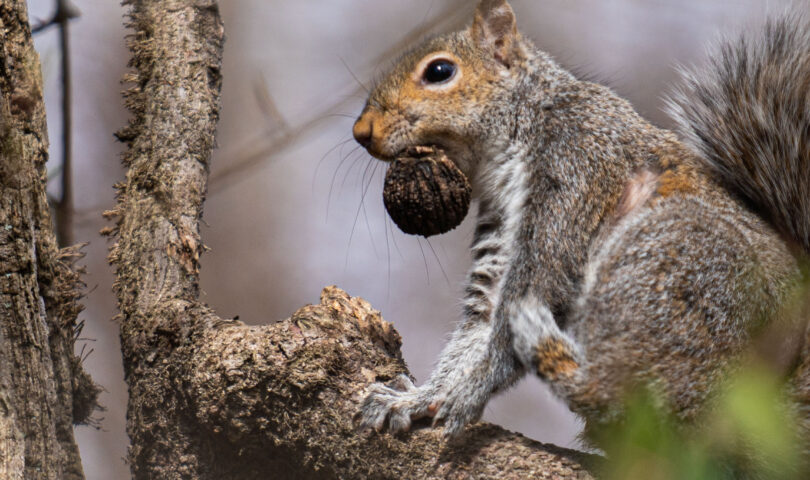My morning routine involves brewing tea or coffee and enjoying at my kitchen table. From this vantage point I can see a large maple tree in front of my house and my bird feeder.
Sipping a caffeinated beverage, I watch birds visit the feeder and the tree. Nuthatches hop down the trunk then flit between tree and feeder. Red bellied woodpeckers are frequent visitors, along with cardinals, black-capped chickadees, tufted titmice and blue jays.
One morning, settling into my routine, I saw new visitors — a pair of squirrels. They didn’t bother the bird feeder, but scampered up and down the tree trunk.
It was an unusual sight at this spot. Since my family moved here some decades ago we’ve only seen a squirrel occasionally. Once or twice a summer, I’ll spot one out in the woods.
Seeing the pair inspired me to learn more about these rodents.
There are over 200 species of squirrels in the world — a much larger number than I expected. The smallest is about 5 inches from nose to tail. This littlest guy is the African pygmy squirrel.
The Indian giant squirrel grows to three feet long and up to four pounds.
The many species of squirrels are divided into three groups — tree squirrels, ground squirrels and flying squirrels.
Squirrels share with other rodents the trait of continually growing front teeth. Gnawing wears down their teeth. Reading about this, I saw it described in two ways — one is that they have to gnaw almost continuously because their teeth keep growing. The other flips it, saying that their teeth keep growing to make up for the continuous gnawing.
The eastern grey squirrel — the category I believe the pair enjoying the maple tree fall into — is native to the United States. Apparently it was introduced to other countries, where it is poses a threat to native squirrels through competition for resources.
In the late 19th century, grey squirrels were brought into city parks to lend the new green spaces some charm.
Eastern grey squirrels have an excellent sense of smell, and can find food they and other squirrels have hidden away.
Whether or not squirrels providently consider the future when burying nuts, they are a keystone species in our ecosystem, and help forests thrive.
ALDONA BIRD is a journalist using experience gained working on organic farms in Europe to help her explore possibilities of local productivity.




